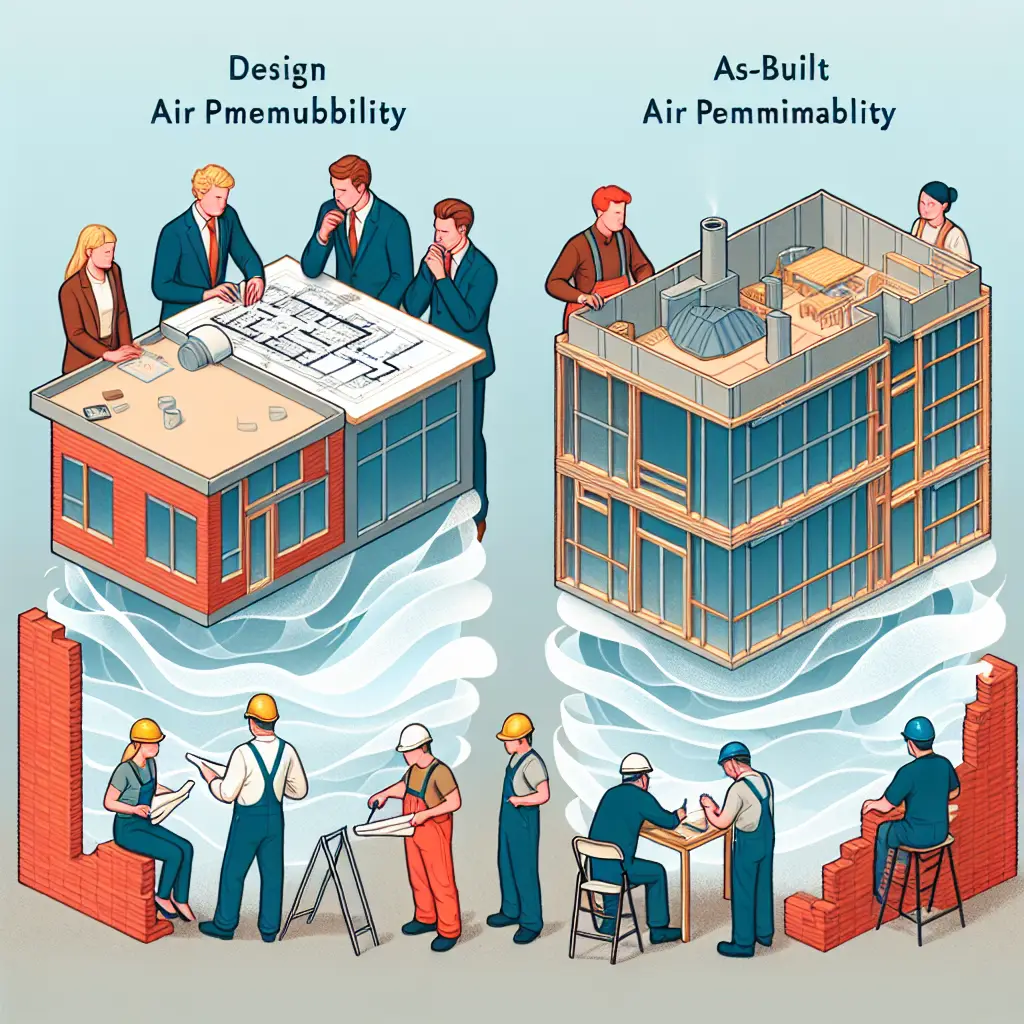SAP Calculations: A Beginner’s Guide
In today’s world of increasing energy consumption and rising utility costs, ensuring that a property is energy-efficient is more important than ever. For homeowners and property developers in the UK, SAP calculations are a critical aspect of building compliance and energy performance assessment. This guide will provide a detailed introduction to SAP calculations, their purpose, and the essential role they play in sustainable building practices, particularly focussing on the services provided by Ratio Seven, a trusted name in this field.
What are SAP Calculations?
In the UK, every residential dwelling must adhere to certain energy performance standards, as stipulated by the government. SAP, or the Standard Assessment Procedure, is the official methodology used to assess and benchmark the energy efficiency of a residential building. Developed by the Building Research Establishment, SAP calculations are pivotal in producing an Energy Performance Certificate (EPC), which is required by law for the sale or rental of any property. This procedure is a detailed analysis that considers multiple factors contributing to a building’s energy efficiency.
Purpose and Scope
SAP calculations serve a primary purpose: to evaluate the energy efficiency of a dwelling. They ensure that the building aligns with government standards and helps homeowners reduce energy consumption. The scope of the assessment extends to various aspects, including:
- Insulation Level: Evaluating how well the building retains heat.
- Heating Systems: Assessing the efficiency of boilers, radiators, and other heating equipment.
- Ventilation: Analysing the airflow and maintaining air quality with minimal heat loss.
- Renewable Energy Integration: Reviewing the use of technologies like solar panels and heat pumps.
- Construction Materials: Examining the thermal properties and sustainability of building materials.
- Building Size: Considering how the size impacts heat retention and energy consumption.
- Lighting Efficiency: Checking the energy consumption of lighting systems.
- Ventilation Strategy: Ensuring modern ventilation methods improve air quality while conserving energy.
The ultimate goal is to ensure buildings are not only compliant with legal standards but also efficient in their energy usage, thereby contributing to environmental sustainability and reducing energy costs for occupants.
Information Required
Conducting SAP calculations requires comprehensive information about the property. Some of the necessary data points include:
- Design and Construction Details: Floor plans, elevations, and insulation specifications.
- Heating, Cooling, and Ventilation Systems: Type, efficiency, and layout of systems used.
- Insulation and Materials Info: U-values of walls, floors, and roofs.
- Renewable Energy Sources: Details on installations like solar panels or biomass systems.
- Lighting Efficiency: Type and efficiency of installed lighting solutions.
The SAP assessment follows a structured process through its various stages:
- As-Designed Stage: This initial phase assesses the building’s design before construction begins.
- Build Stage: If there are significant changes during construction, a reassessment ensures ongoing compliance.
- As-Built Stage: The final evaluation of the completed building confirms it meets all required standards.
This thorough approach ensures that the property’s energy performance is optimised from start to finish.
Outcomes
Upon completion of an SAP calculation, a home receives a numerical SAP rating that indicates its energy efficiency. This rating directly impacts the property’s Energy Performance Certificate (EPC), a crucial document in the real estate market. A higher SAP rating suggests lower estimated annual energy costs, making the property more attractive to potential buyers or tenants. Furthermore, it reflects positively on the environmental impact of the building.
Importance of SAP Calculations
Accurate SAP calculations are indispensable in the design and construction of energy-efficient homes. From the blueprint stage to completion, these calculations prevent costly modifications and ensure the structure complies with building regulations. By adhering to SAP standards, property developers can avoid unexpected roadblocks, ensuring that the dwellings they build are comfortable and sustainable for their occupants.
SAP calculations are not merely a bureaucratic requirement; they are instrumental in future-proofing buildings against rising energy costs and environmental regulations. With climate change and energy conservation becoming global priorities, the efficiency standards of our homes can significantly impact both our ecological footprint and economic well-being.
Ratio Seven: Services Related to SAP Calculations
Ratio Seven stands as a beacon of expertise when it comes to SAP calculations and building compliance in the UK. With over two decades of experience in the construction industry, Ratio Seven brings a wealth of knowledge and proficiency to the table, providing services that ensure satisfaction and regulatory compliance for clients.
Services Offered
SAP Calculations: Ratio Seven specialises in providing Part L, Part F, and Part G SAP calculations, essential for obtaining building regulations approval. They support clients throughout the process, from the conception of the initial design to the final touches of the build.
Air Tightness Testing: As professional airtightness testers, Ratio Seven assesses materials’ efficiency in resisting air passage, a crucial aspect of effective insulation and energy-saving.
Building Cost Reduction: Ratio Seven’s expertise extends to optimizing building costs, ensuring regulatory compliance while securing all necessary certifications and keeping spending in check.
Expertise and Experience
Ratio Seven’s extensive experience enables them to guide property developers, house builders, and self-builders through the intricacies of building regulations. They address changes that occur during the construction phase without compromising project approval, leveraging their in-depth understanding of the regulations and practical construction challenges.
Their commitment to providing accurate SAP calculations and airtightness testing services makes them a trusted partner for anyone involved in residential building projects. Ratio Seven’s assurance that buildings meet energy performance standards is invaluable in achieving cost efficiency and sustainability.

FAQs
Q: Why are SAP calculations mandatory in the UK?
SAP calculations are mandated by the UK government to ensure that residential buildings meet energy efficiency standards. These calculations are vital in reducing energy consumption and costs, contributing to environmental protection. The resulting SAP rating is crucial for completing an Energy Performance Certificate (EPC), which is required when selling or renting a property.
Q: How often should SAP calculations be updated?
SAP calculations should initially be performed at the design stage and reassessed if significant changes occur during construction. A final assessment at the as-built stage ensures the dwelling complies with regulations. However, recalculations might be needed if retrofitting or substantial modifications are made in the future to align with new regulations or to improve energy efficiency.
Q: What is an appropriate SAP rating for new buildings?
While there isn’t a universally ‘correct’ SAP rating, new buildings typically aim for a higher rating to ensure low energy consumption and costs. The government sets minimum requirements that buildings must meet, but achieving a higher SAP rating can enhance the property’s market value and appeal by demonstrating superior energy performance.
Q: Can SAP calculations predict the exact energy costs for a property?
SAP calculations provide estimates based on standardised usage patterns and typical behaviour, which serve as a useful reference for comparing properties. However, the actual energy costs can vary depending on occupants’ habits, energy prices, and weather conditions. Thus, while informative, SAP calculations are best viewed as useful indicators rather than precise predictors of costs.
Q: Are SAP calculations beneficial for existing homes?
Absolutely. Existing homes can benefit from SAP calculations through identified improvements leading to enhanced energy performance and reduced costs. Retrofitting, upgrading systems, and optimising insulation all contribute to a better SAP rating, adding to both comfort and property value.
In conclusion, SAP calculations are an integral component of ensuring buildings are energy-efficient and compliant with UK building regulations. With expert guidance from Ratio Seven, developers and homeowners can successfully navigate the complexities of energy assessments, ensuring their properties meet high standards of efficiency and sustainability, which can significantly enhance comfort and economic benefits in the long run.




